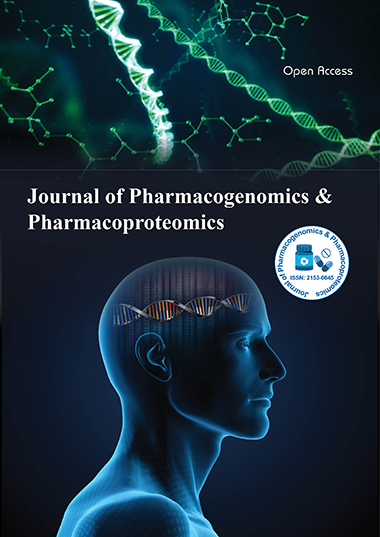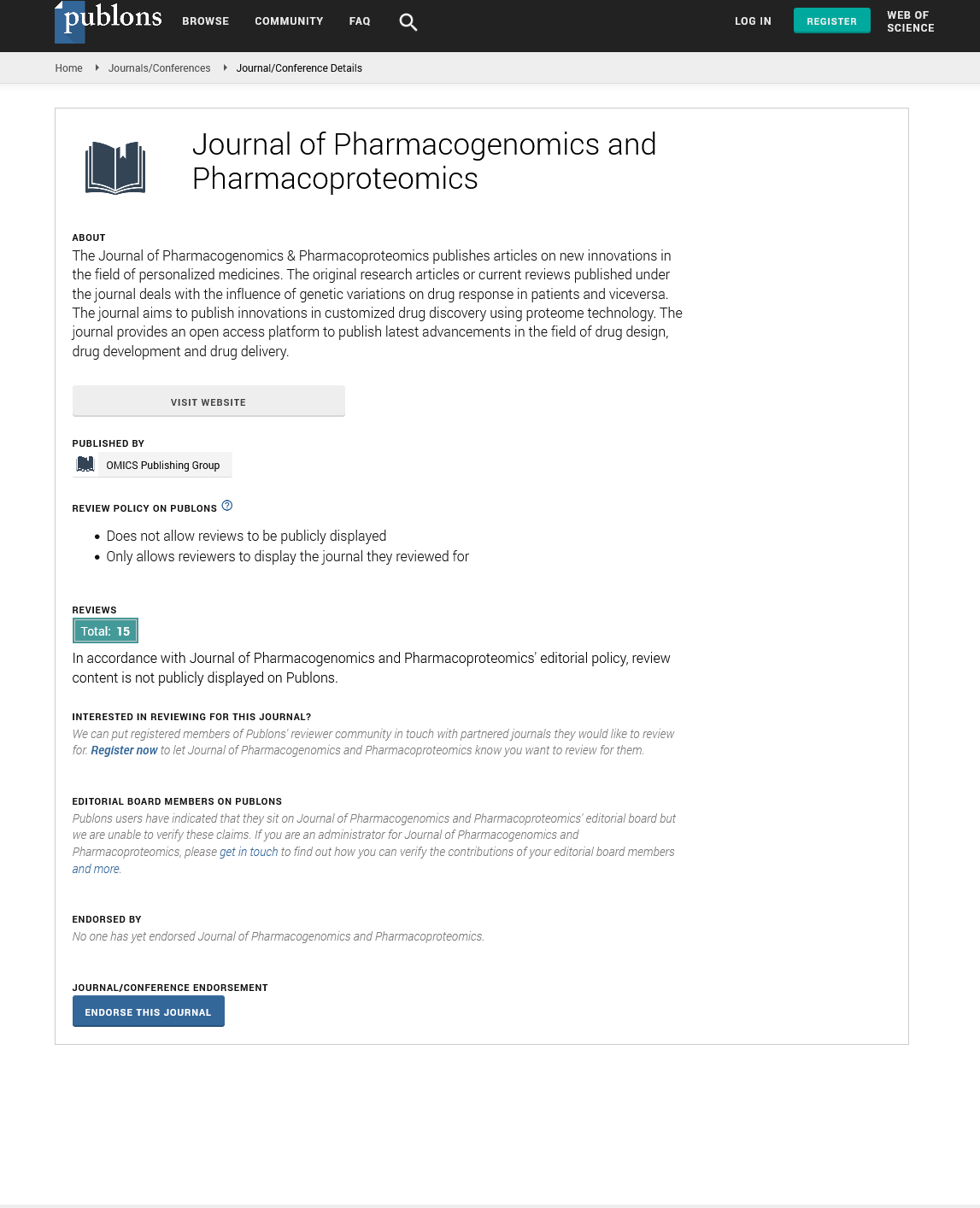Indexed In
- Open J Gate
- Genamics JournalSeek
- Academic Keys
- JournalTOCs
- ResearchBible
- Electronic Journals Library
- RefSeek
- Hamdard University
- EBSCO A-Z
- OCLC- WorldCat
- Proquest Summons
- SWB online catalog
- Virtual Library of Biology (vifabio)
- Publons
- MIAR
- Euro Pub
- Google Scholar
Useful Links
Share This Page
Journal Flyer

Open Access Journals
- Agri and Aquaculture
- Biochemistry
- Bioinformatics & Systems Biology
- Business & Management
- Chemistry
- Clinical Sciences
- Engineering
- Food & Nutrition
- General Science
- Genetics & Molecular Biology
- Immunology & Microbiology
- Medical Sciences
- Neuroscience & Psychology
- Nursing & Health Care
- Pharmaceutical Sciences
Opinion Article - (2023) Volume 14, Issue 3
Exploring the Benefits of Pharmacodynamic Assay of Cancer Research and Drug Development
Zhu Li*Received: 28-Apr-2023, Manuscript No. JPP-23-21676; Editor assigned: 02-May-2023, Pre QC No. JPP-23-21676 (PQ); Reviewed: 17-May-2023, QC No. JPP-23-21676; Revised: 25-May-2023, Manuscript No. JPP-23-21676 (R); Published: 01-Jun-2023, DOI: 10.35248/2153-0645.23.14.052
Description
Cancer is one of the most destructive diseases of our time, and scientists are constantly searching for new treatments to combat its effects. Pharmacodynamic assays have become a valuable tool in cancer research and drug development, as they can provide essential insight into the way drugs interact with biological systems. It focuses on how drugs interact with biological systems to produce their therapeutic effects. Pharmacodynamic assays measure how a particular drug affects various biological processes including cell death, gene expression, cell proliferation, and protein synthesis. These assays provide researchers with crucial information about how a drug interacts with its target cells or molecules. In cancer research and drug development, pharmacodynamic assays are used to assess the efficacy of potential drugs in treating cancerous cells or tumors. By studying how drugs interact with tumor cells or other cancerous tissues, researchers can gain insight into which drugs may be most effective at targeting specific types of cancer. This information helps them identify promising candidates for clinical trials and develop more effective treatments for patients. In addition to providing valuable data on drug efficacy, pharmacodynamic assays can also help researchers determine the dosage levels needed to achieve optimal results when using a particular medication. By studying how different doses affect cellular processes in vitro (in a laboratory setting), researchers can determine the most effective dose for each individual patient’s needs and maximize treatment outcomes. Pharmacodynamic assays have become an invaluable tool in cancer research and drug development due to their ability to quickly provide accurate information about how a medication interacts with its target cells or molecules. With this knowledge, researchers can develop more targeted treatments that are tailored specifically to each patient’s individual needs.
Cancer research and drug development have greatly benefited from the use of pharmacodynamic assays. These assays provide a comprehensive evaluation of the activity of a drug or therapeutic agent by measuring its effects on cells, tissues, and biological systems. By analyzing how these compounds interact with target molecules, scientists are able to identify potential therapeutic agents that can be used to treat cancer. One of the primary benefits of using pharmacodynamic assays in cancer research is that they can provide an understanding as to how a drug will interact with its target molecules. By studying how these compounds interact with specific targets, researchers can identify potential treatments that may be effective in treating cancer.
Cancer research is a crucial field that requires the use of cuttingedge technology to make significant progress. Pharmacodynamic assays are one such tool that can be used to evaluate the effects of drugs on cancer cells, providing valuable insights into how treatments may work in human clinical trials. In this blog post, we will explore some examples of studies that have utilized pharmacodynamic assays to advance cancer research. One notable example is a study published in 2019 by researchers from Stanford University. The team conducted a pharmacodynamic assay of a drug called crizotinib, which is used to treat Non-Small Cell Lung Cancer (NSCLC). The assay revealed that crizotinib reduced the activity of certain proteins involved in NSCLC growth and survival. This finding was then tested in clinical trials and showed promising results, confirming the validity of the pharmacodynamic assay as a useful tool for studying cancer drugs. Another example comes from a study published in 2020 by researchers from Memorial Sloan Kettering Cancer Center. The team conducted a pharmacodynamic assay on an experimental antibody drug called durvalumab, which has been developed for treating advanced bladder cancer. The assay revealed that durvalumab was able to reduce levels of certain proteins associated with bladder cancer growth, suggesting its potential as an effective treatment option for bladder cancer patients. Finally, another example comes from a study published in 2018 by researchers from Harvard Medical School. In this study, the team conducted a pharmacodynamic assay on an experimental drug called olaparib, which has been developed for treating ovarian cancer patients. The assay revealed that olaparib was able to reduce levels of certain proteins involved in ovarian tumor growth and progression, indicating its potential as an effective treatment option for ovarian cancer patients. These examples demonstrate how pharmacodynamic assays can be used to gain valuable insights into how potential treatments may work against different types of cancers. By providing valuable data points about how drugs interact with specific biological processes related to cancer growth and progression, these assays can help inform decision-making around drug development and clinical trials design for more effective treatments against various types of cancers.
Citation: Exploring the Benefits of Pharmacodynamic Assay of Cancer Research and Drug Development. J Pharmacogenom Pharmacoproteomics.14:052.
Copyright: © 2023 Li Z. This is an open-access article distributed under the terms of the Creative Commons Attribution License, which permits unrestricted use, distribution, and reproduction in any medium, provided the original author and source are credited.

